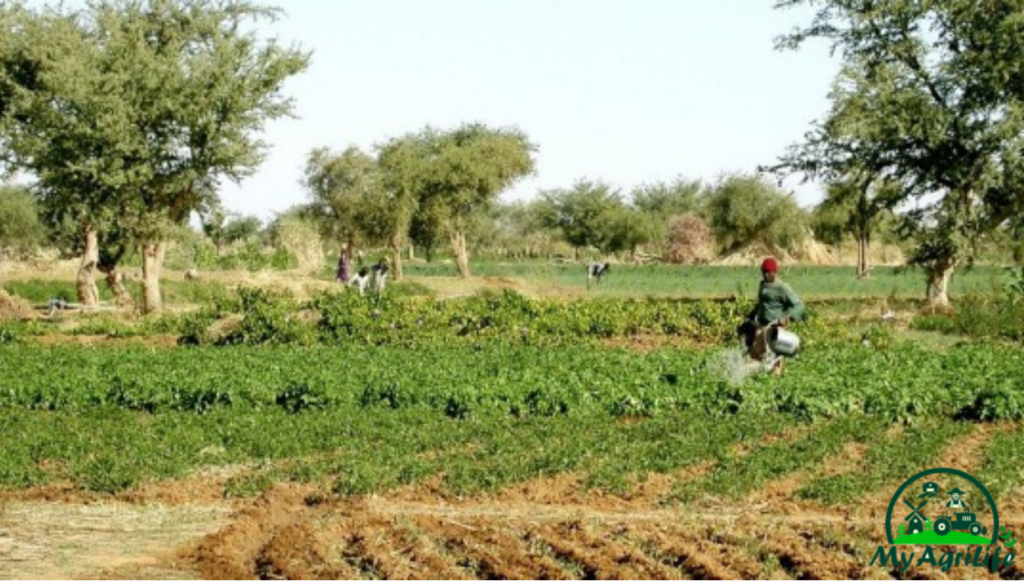In the latest blog in our ‘food year’ series, guest blogger Hambulo Ngoma discusses the potential policy collisions between producing food to feed growing populations and conserving our forests.

The 2021 UN Food Systems Summit taking place later this week aims to provide heads of state and governments with actionable steps to transform how we produce, process and consume food. The summit provides a real opportunity for reigniting the world’s collective ambition to achieve the Sustainable Development Goals by 2030.
The summit is organised into five action tracks. I will be following action track three – to boost nature-positive food production by optimising resource use in food system value chains. Underpinning this track is the urgency to reduce our carbon footprint while curbing damage to forests and biodiversity.
Action track three is both important and timely: agricultural production is the major single driver of global biodiversity loss and deforestation; we urgently need to reconcile food production with conserving and protecting our environment.
This is the latest blog in the ‘food year’ series that explores policies and practice to transform our food systems. Read the first blog setting out practical ways for the summit’s convenors to regroup after getting off to a rocky start.
Population growth and food production: sub-Saharan Africa’s challenge?
Sub-Saharan Africa’s (SSA) growing demand for food is putting huge pressure on forests and biodiversity. And with the region’s population set to double by 2050, fast-paced agricultural expansion is poised to continue – it is, rather than productivity growth, the main source of increased agricultural production. This necessitates calls for sustainable agricultural productivity growth in SSA.
Here, I examine cropland expansion in SSA and identify practical steps and opportunities to address potential collisions between population growth, food security and conservation objectives.
Why do we need to reconcile food production and conservation?
SSA has seen huge agricultural expansion over the last two decades. Over this period, around 75% of the region’s crop production growth came from expansion of cultivated areas, and only 25% from improvements in crop yield.
Between 2001 and 2015, agricultural expansion by smallholder farmers accounted for 92% of Africa’s lost forest cover relative to a 2010 baseline. An additional 430 million hectares is estimated to be cleared for food production in SSA by 2060.
In a recent paper, my co-authors and I examined smallholder farmers’ cropland expansion in Zambia. Our findings showed it accounts for about 60% of the 250,000 hectares of forest lost annually in Zambia.
Smallholder farmers, who depend on rainfed agriculture, find themselves both contributing to and at the mercy of a vicious cycle: they need to expand cropland to increase food production, yet expansion into forests drives deforestation, which increases temperatures causing erratic changes in rainfall. With low adaptive capacity, smallholder farmers are highly vulnerable to these climate shocks and stresses.
In the lead up to the summit, national governments and other stakeholders from across Africa have organised a series of pre-summit dialogues that included identifying national priorities to be addressed under each of the five action tracks.
In Zambia, dialogues led by the National Food and Nutrition Commission under the leadership of the vice president’s office with support from UN agencies have been convened at district, province and national level and discussed how to build sustainable and resilient farming systems, among other things.
Three practical steps towards reconciling food production and conservation
Look out for policy collisions
A natural first step is to identify if and where there are potential policy collisions between food production and conservation objectives. Various initiatives aim to highlight the problem and propose potential solutions to national governments. One example is the Social and Environmental Trade-offs in African Agriculture (SENTINEL) project.
This multi-country, multi-year research initiative led by IIED with activities in Ethiopia, Ghana, and Zambia aims to help decision makers, both in public and private sectors, to consider the consequences of different agricultural development pathways for society and the environment.
For most countries on the continent, a closer look at the objectives of national agricultural policies and forestry, biodiversity and REDD+ policy strategies would identify and help assess the extent of potential policy collisions.
Raise agricultural productivity on existing land and build resilience in smallholder farming systems
Increasing agricultural productivity in a way that is sustainable and builds resilience requires a cocktail of actions that:
Address prevalent declining soil productivity, with emphasis on organic fertilisers and mixed farming practices.
Promote the use of resilient local landraces and improved heat, pest and drought tolerant seed varieties and animal breeds, developed with farmers’ participation.
Invest in participatory agricultural research, development, and extension and irrigation.
Scale up and out sustainable, climate-smart, regenerative, biodiverse and resilient agricultural practices that can enhance productivity and nutrition, while helping farmers manage climate risk, and
Invest in risk mitigation and management strategies such as weather-based index insurance to build resilience against climate shocks.
Invest in better land use planning and land tenure
Policy collisions may be minimised by coordinated land use planning across government ministries. For example, aims to increase agricultural production can be met by expanding cultivated areas into degraded forests rather than expanding into primary forests and biodiversity-rich habitats that may be earmarked for conservation.
At the same time, traditional farming systems that sustainably use forest resources to ensure food and nutrition security should be supported and incentivised through secure land tenure.
Reconciling food production and conservation need not be a choice between destroying forests and feeding fast-growing populations. Synergies and win-win outcomes are possible.
Farm households can conserve forests for the global public carbon benefits while at the same time raising productivity by intensifying agricultural production on existing lands.









